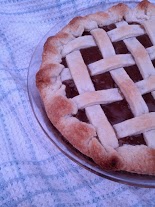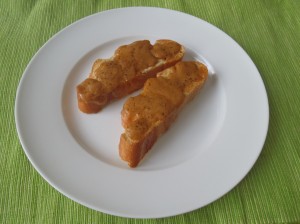The food commonly eaten on Easter Sunday is rich in symbolism. The ingredients and dishes are rooted in two traditions: the Jewish Passover dinner, or Seder, and the pagan springtime festival of renewal and fertility. Easter food shows how these two traditions have combined to form our current concept of the holiday.
Bread and Wine
Growing up, Easter Sundays began with a church service that re-enacts the last supper of Christ, which was a Seder. The first “meal” that we ate on Easter Sunday was therefore a meager one: the sacrament of communion, an unleavened wafer and a sip of red wine.
It is said that when the pharaoh freed the Hebrews, they fled Egypt so abruptly that they didn’t … Continue reading.


